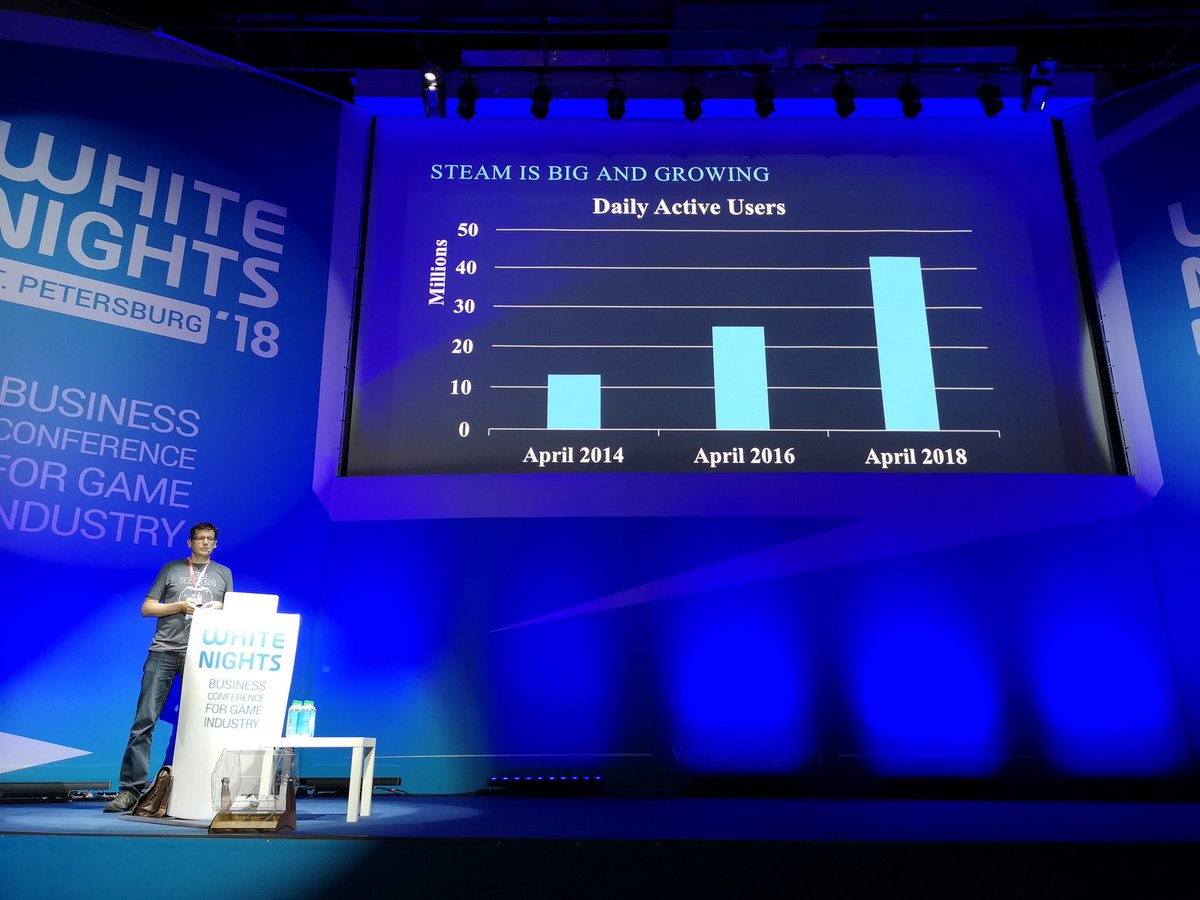Here's an interesting way to look at how the amount of Linux users on Steam has changed over time, when looking at the amount of daily active users.
Using a similar method to the one made by user dmantione who submitted this article to us back in May of 2016, which looked at peak users. A user on reddit has taken a look at the Linux market share against Valve's reported daily active users, using data they gave out during a recent presentation.
Here's the image it references (credit):
So we have about 12 million in April 2014, 25 million in April 2016 and 42 million in April 2018. Using the figures for the Steam market share given out by the Hardware Survey then, we get:
- April 2014 - Linux 1.26% - 151,200
- April 2016 - Linux 0.90% - 225,000
- April 2018 - Linux 0.55% - 231,000
That's daily active Linux users, not overall Linux users.
While this should of course be taken with a pinch of salt, it's still quite interesting if it's even remotely close to what's happening. While it has increased going by that data, it does look like the Linux user base on Steam is close to stagnating as growth has slowed down quite a lot in more recent years.
The Hardware Survey from August 2017 up until April 2018 had a counting flaw, which had cyber cafes using Windows 7 in Asia being over-counted. Valve say they fixed it, so it should mean the April 2018 number is actually correct.
Note: We originally said the counting flaw might have affected it, this was wrong (since it's fixed and we're using the overall number) and we have corrected the text—blame a lack of coffee and hot weather.
Quoting: KetilI don't think daily active users mean too much when it comes to active users in general. There are plenty of users on all platforms who play a few days a week, or even a few times a month who should be considered active, but doesn't contribute much to the average daily active users.It is an interesting thought yes, but we don't really know what Valve is counting here. Are they only counting users on every day, at least once a week or what? As usual, a lot we don't know :)
Valve say they fixed it, so it should mean the April 2018 number is actually correct.I would say rather, it should mean that particular counting error is no longer affecting the totals. Doesn't mean it's correct--we still have no idea how things are counted and so what other sorts of errors and/or biases may be lurking in the methodology.
Quoting: bradgyBasically, has the increase in Linux users over time kept up with the increases in costs required to port games to that platform?Has there been an increase in costs required to port games to Linux? The impression I've had is that, to the contrary, technological barriers to porting have been shrinking for the most part.
Quoting: liamdaweHowever they count it, it doesn't matter that much as long as they count it the same for every platform (technically, we don't even know that that's the case although it would be pretty ridiculous otherwise). I suppose it's possible that usage patterns on Windows, MacOS and Linux are quite different, such that "daily active users" (however counted) had a different relationship to "total users" on each platform, but it seems kind of unlikely.Quoting: KetilI don't think daily active users mean too much when it comes to active users in general. There are plenty of users on all platforms who play a few days a week, or even a few times a month who should be considered active, but doesn't contribute much to the average daily active users.It is an interesting thought yes, but we don't really know what Valve is counting here. Are they only counting users on every day, at least once a week or what? As usual, a lot we don't know :)
Also, I can't prove, but I would suspect, that on average there is a rough correlation between frequency of play and frequency of purchase. If that were true, then someone only on a few times a month would on average be less $$ worth of customers than someone on nearly every day, and even if usage patterns were different on different platforms a plausible version of "daily active users" would say something fairly consistent about purchasing power of consumers.
Here's a heaping spoonful of salt to take all that with . . . one counterpoint would be the possibility that, for instance, a big proportion of that still-very-significant 30%-ish Simplified Chinese Steam users, almost all on Windows, (thanks for the figure anth) spend a lot of time online while buying relatively little. That would skew what "daily active users" represented on different platforms from a "selling games" point of view.







 How to setup OpenMW for modern Morrowind on Linux / SteamOS and Steam Deck
How to setup OpenMW for modern Morrowind on Linux / SteamOS and Steam Deck How to install Hollow Knight: Silksong mods on Linux, SteamOS and Steam Deck
How to install Hollow Knight: Silksong mods on Linux, SteamOS and Steam Deck